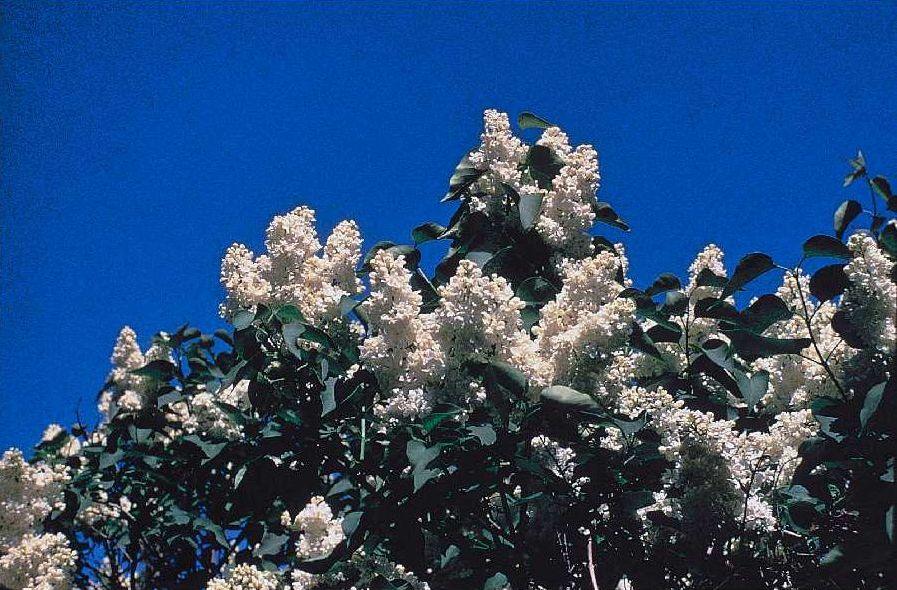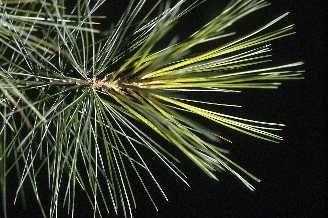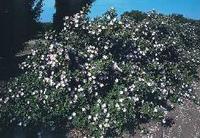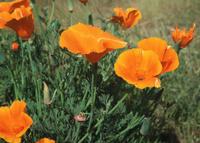It was introduced to England some 300 years ago where it became a garden favorite. New Hampshire historian Leon Anderson writes in To This Day that the purple lilac was first imported from England and planted at the Portsmouth home of Governor Benning Wentworth in 1750. "New Hampshire Revised Statute Annotated (RSA) 3:5 Anderson, Leon. Flower -- Tree -- Bird"
This image is not copyrighted and may be freely used for any purpose. Please credit the artist, original publication if applicable, and the USDA-NRCS PLANTS Database. The following format is suggested and will be appreciated:
USDA-NRCS PLANTS Database / Herman, D.E. et al. 1996. North Dakota tree handbook. USDA NRCS ND State Soil Conservation Committee; NDSU Extension and Western Area Power Admin., Bismarck, ND. Download Full High Resolutiom Image
Kingdom Plantae – Plants, Subkingdom Tracheobionta – Vascular plants, Superdivision Spermatophyta – Seed plants, Division Magnoliophyta – Flowering plants, Class Magnoliopsida – Dicotyledons, Subclass Asteridae –, Order Scrophulariales –, Family Oleaceae – Olive family, Genus Syringa L. – lilac, Species Syringa vulgaris L. – common lilac.
Text Reference: USDA-NRCS. 2005. The PLANTS Database (http://plants.usda.gov). National Plant Data Center, Baton Rouge, LA 70874-4490 USA.
Leave a comment, make a request, Let this small sampling be a guide to better quality, more plentiful, public domain, royalty free, copyright free, high resolution, images, stock photos, jpeg, jpg, free for commercial use, clip art, clipart, clip-art.
Sunday, July 31, 2005
Saturday, July 30, 2005
White Hawthorn Blossom - State Flower of Missouri
Plant seeds in fall in ordinary soil, they may not germinate unti, the second year. The native Hawthorn is also known as "May", "White Hawthorn" or "Quick"
This image is not copyrighted and may be freely used for any purpose. Please credit the artist, original publication if applicable, and the USDA-NRCS PLANTS Database. The following format is suggested and will be appreciated:
USDA-NRCS PLANTS Database / Herman, D.E. et al. 1996. North Dakota tree handbook. USDA NRCS ND State Soil Conservation Committee; NDSU Extension and Western Area Power Admin., Bismarck, ND. Download Full High Resolution Image
Kingdom Plantae -- Plants, Subkingdom Tracheobionta -- Vascular plants, Superdivision Spermatophyta -- Seed plants, Division Magnoliophyta -- Flowering plants, Class Magnoliopsida -- Dicotyledons, Subclass Rosidae, Order Rosales, Family Rosaceae -- Rose family, Genus Crataegus L. -- hawthorn P, Species Crataegus ×anomala Sarg. (pro sp.) -- P
Text Reference: USDA-NRCS. 2005. The PLANTS Database (http://plants.usda.gov). National Plant Data Center, Baton Rouge, LA 70874-4490 USA.
Leave a comment, make a request, Let this small sampling be a guide to better quality, more plentiful, public domain, royalty free, copyright free, high resolution, images, stock photos, jpeg, jpg, free for commercial use, clip art, clipart, clip-art.
This image is not copyrighted and may be freely used for any purpose. Please credit the artist, original publication if applicable, and the USDA-NRCS PLANTS Database. The following format is suggested and will be appreciated:
USDA-NRCS PLANTS Database / Herman, D.E. et al. 1996. North Dakota tree handbook. USDA NRCS ND State Soil Conservation Committee; NDSU Extension and Western Area Power Admin., Bismarck, ND. Download Full High Resolution Image
Kingdom Plantae -- Plants, Subkingdom Tracheobionta -- Vascular plants, Superdivision Spermatophyta -- Seed plants, Division Magnoliophyta -- Flowering plants, Class Magnoliopsida -- Dicotyledons, Subclass Rosidae, Order Rosales, Family Rosaceae -- Rose family, Genus Crataegus L. -- hawthorn P, Species Crataegus ×anomala Sarg. (pro sp.) -- P
Text Reference: USDA-NRCS. 2005. The PLANTS Database (http://plants.usda.gov). National Plant Data Center, Baton Rouge, LA 70874-4490 USA.
 | The White Hawthorn Blossom (Crataegus arnoldiana) was named the state flower of Missouri on March 16, 1923. These snall deciduous trees can be very ornamental as we see in this example. The flowers are white and grow in bunches with associated berries They can vary considerably in form, color and size. The White Hawthorn Blossom is most common in southern Missouri. sos.mo.gov/ . |
Leave a comment, make a request, Let this small sampling be a guide to better quality, more plentiful, public domain, royalty free, copyright free, high resolution, images, stock photos, jpeg, jpg, free for commercial use, clip art, clipart, clip-art.
Friday, July 29, 2005
White Pine Tassel - State Flower of Maine
GENERAL DISTRIBUTION : Eastern white pine is distributed from Newfoundland west to extreme southeastern Manitoba and south to the Great Lake States, along the Atlantic seabord to New Jersey, and in the Appalachian Mountains to northern Georgia. It also occurs in Iowa, western Kentucky, western Tennessee, and Delaware
GENERAL BOTANICAL CHARACTERISTICS : Eastern white pine is a large, native, evergreen conifer. It grows rapidly and in 40 years can be 60 feet (18.3 m) tall and 8 to 10 inches (20-25 cm) in diameter Individuals of 150 feet (46 m) and 40 inches (102 cm) in diameter were common in virgin forests. Eastern white pine commonly reaches 200 years of age and may exceed 450 years [68]. In closed stands, boles are free of branches for over two-thirds of their length. Needles are 2.5 to 5.0 inches (6-13 cm) long, and the winged seeds are about 0.8 inches (2 cm) long. The roots are widespreading and moderately deep without a distinct taproot.
AUTHORSHIP AND CITATION : Carey, Jennifer H. 1993. Pinus strobus. In: Fire Effects Information System, [Online]. U.S. Department of Agriculture, Forest Service, Rocky Mountain Research Station, Fire Sciences Laboratory (Producer). Available: http://www.fs.fed.us/database/feis/ [2005, July 29].
This image is not copyrighted and may be freely used for any purpose. Download Full High Resolution Image Please credit the artist, original publication if applicable, and the USDA-NRCS PLANTS Database. The following format is suggested and will be appreciated:
Robert H. Mohlenbrock @ USDA-NRCS PLANTS Database / USDA NRCS. 1995. Northeast wetland flora: Field office guide to plant species. Northeast National Technical Center, Chester, PA.
Text Reference: USDA-NRCS. 2005. The PLANTS Database (http://plants.usda.gov). National Plant Data Center, Baton Rouge, LA 70874-4490 USA
Leave a comment, make a request, Let this small sampling be a guide to better quality, more plentiful, public domain, royalty free, copyright free, high resolution, images, stock photos, jpeg, jpg, free for commercial use, clip art, clipart, clip-art.
GENERAL BOTANICAL CHARACTERISTICS : Eastern white pine is a large, native, evergreen conifer. It grows rapidly and in 40 years can be 60 feet (18.3 m) tall and 8 to 10 inches (20-25 cm) in diameter Individuals of 150 feet (46 m) and 40 inches (102 cm) in diameter were common in virgin forests. Eastern white pine commonly reaches 200 years of age and may exceed 450 years [68]. In closed stands, boles are free of branches for over two-thirds of their length. Needles are 2.5 to 5.0 inches (6-13 cm) long, and the winged seeds are about 0.8 inches (2 cm) long. The roots are widespreading and moderately deep without a distinct taproot.
AUTHORSHIP AND CITATION : Carey, Jennifer H. 1993. Pinus strobus. In: Fire Effects Information System, [Online]. U.S. Department of Agriculture, Forest Service, Rocky Mountain Research Station, Fire Sciences Laboratory (Producer). Available: http://www.fs.fed.us/database/feis/ [2005, July 29].
This image is not copyrighted and may be freely used for any purpose. Download Full High Resolution Image Please credit the artist, original publication if applicable, and the USDA-NRCS PLANTS Database. The following format is suggested and will be appreciated:
Robert H. Mohlenbrock @ USDA-NRCS PLANTS Database / USDA NRCS. 1995. Northeast wetland flora: Field office guide to plant species. Northeast National Technical Center, Chester, PA.
Text Reference: USDA-NRCS. 2005. The PLANTS Database (http://plants.usda.gov). National Plant Data Center, Baton Rouge, LA 70874-4490 USA
Leave a comment, make a request, Let this small sampling be a guide to better quality, more plentiful, public domain, royalty free, copyright free, high resolution, images, stock photos, jpeg, jpg, free for commercial use, clip art, clipart, clip-art.
Thursday, July 28, 2005
Goldenrod - State Flower of Kentucky
Flowers in a broad, pyramidal panicle. Adaptable as to site - old fields, roadsides, wet meadows, forest margins. Goldenrods do not cause hayfever! They bloom at the
same time as ragweed, a major offender.
Often used for borders. It will grow in sun or shade in almost any soil. Plant in April and stake in early growth for best results and shape but the seeds may be sown in autumn or spring.
This image is not copyrighted and may be freely used for any purpose. Please credit the artist, original publication if applicable, and the USDA-NRCS PLANTS Database. The following format is suggested and will be appreciated: Download Full High Resolution Image
Jennifer Anderson @ USDA-NRCS PLANTS Database
Kingdom Plantae -- Plants, Subkingdom Tracheobionta -- Vascular plants, Superdivision Spermatophyta -- Seed plants, Division Magnoliophyta -- Flowering plants, Class Magnoliopsida -- Dicotyledons, Subclass Asteridae, Order Asterales, Family Asteraceae -- Aster family, Genus Solidago L. -- goldenrod P, Contains 69 species and 141 accepted taxa overall.
Text Reference:USDA-NRCS. 2005. The PLANTS Database (http://plants.usda.gov). National Plant Data Center, Baton Rouge, LA 70874-4490 USA.
Leave a comment, make a request, Let this small sampling be a guide to better quality, more plentiful, public domain, royalty free, copyright free, high resolution, images, stock photos, jpeg, jpg, free for commercial use, clip art, clipart, clip-art.
same time as ragweed, a major offender.
Often used for borders. It will grow in sun or shade in almost any soil. Plant in April and stake in early growth for best results and shape but the seeds may be sown in autumn or spring.
This image is not copyrighted and may be freely used for any purpose. Please credit the artist, original publication if applicable, and the USDA-NRCS PLANTS Database. The following format is suggested and will be appreciated: Download Full High Resolution Image
Jennifer Anderson @ USDA-NRCS PLANTS Database
Kingdom Plantae -- Plants, Subkingdom Tracheobionta -- Vascular plants, Superdivision Spermatophyta -- Seed plants, Division Magnoliophyta -- Flowering plants, Class Magnoliopsida -- Dicotyledons, Subclass Asteridae, Order Asterales, Family Asteraceae -- Aster family, Genus Solidago L. -- goldenrod P, Contains 69 species and 141 accepted taxa overall.
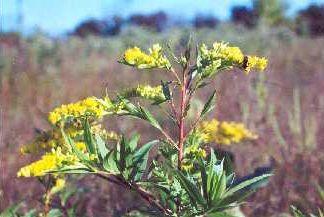 | Goldenrod (Solidago canadensis var. scabra) adopted as state flower in 1926. A coarse, hardy, perennial. Ornamental shrub with a somewhat weedy growth as we see in this example. |
Text Reference:USDA-NRCS. 2005. The PLANTS Database (http://plants.usda.gov). National Plant Data Center, Baton Rouge, LA 70874-4490 USA.
Leave a comment, make a request, Let this small sampling be a guide to better quality, more plentiful, public domain, royalty free, copyright free, high resolution, images, stock photos, jpeg, jpg, free for commercial use, clip art, clipart, clip-art.
Wednesday, July 27, 2005
Rose - State Flower of New York
This image is not copyrighted and may be freely used for any purpose. Please credit the artist, original publication if applicable, and the USDA-NRCS PLANTS Database. The following format is suggested and will be appreciated:
Photo Credit: USDA-NRCS PLANTS Database / Herman, D.E. et al. 1996. North Dakota tree handbook. USDA NRCS ND State Soil Conservation Committee; NDSU Extension and Western Area Power Admin., Bismarck, ND. Download Full High Resolution Image
Kingdom Plantae -- Plants, Subkingdom Tracheobionta -- Vascular plants, Superdivision Spermatophyta -- Seed plants, Division Magnoliophyta -- Flowering, plants, Class Magnoliopsida -- Dicotyledons, Subclass Rosidae, Order Rosales, Family Rosaceae -- Rose family, Genus Rosa L. -- rose. Contains 56 species and 90 accepted taxa overall
Text Reference: USDA, NRCS. 2004. The PLANTS Database, Version 3.5 (http://plants.usda.gov). National Plant Data Center, Baton Rouge, LA 70874-4490 USA.
Rose Growing Simplified. Fourth Edition. 2001. Armand J. Lapierre. Cape Cod, MA SHG Resources
Leave a comment, make a request, Let this small sampling be a guide to better quality, more plentiful, public domain, royalty free, copyright free, high resolution, images, stock photos, jpeg, jpg, free for commercial use, clip art, clipart, clip-art. more at Public Domain Clip Art and clip art or public domain and Rose
Tuesday, July 26, 2005
Sunflower State Flower of Kansas Clip Art
+sookie tex. Sunflower State Flower of Kansas. Public Domain Clip Art Stock Photos and Images.
An Act designating and declaring the helianthus or sunflower to be the state flower and floral emblem of the state of Kansas.
Sunflower (Helianthus annuus). Sunflowers originated in North America and were grown for food and hair oil by Native Americans. Sunflower seeds contain a higher percentage of oil than soybean seeds, but their higher price—and continued popularity as a food—may impede their use for biodiesel. Photo by Bruce Fritz.
United States Department of Agriculture. Agricultural Research Service. Please note photos in our Image Gallery are copyright-free, public domain, images unless otherwise indicated. These photos may not be used to infer or imply ARS endorsement of any product, company, or position.
These images or files are works of a United States Department of Agriculture employee, taken or made as part of that person's official duties. As works of the U.S. federal government, the image or file is in the public domain.
Wild relatives of the genus Helianthus (sunflower) are abundant in U.S. gene banks, because sunflower is one of the few crops native to North America. Shown is a wild annual sunflower, H. annuus, one of 73 total species represented. Photo by Peggy Greb.
Generally speaking, works created by U.S. Government employees are not eligible for copyright protection in the United States. See Circular 1 "COPYRIGHT BASICS" PDF from the U.S. Copyright Office.
Whekeas, Kansas has a native wild flower common throughout her borders, hardy and conspicuous, of definite, unvarying and striking shape, easily sketched, molded, and carved, having armorial capacities, ideally adapted for artistic reproduction, with its strong, distinct disk and its golden circle of clear glowing rays -a flower that a child can draw on a slate, a woman can work in silk, or a man can carve on stone or fashion in clay; and
Whereas, This flower has to all Kansans a historic symbolism which speaks of frontier days, winding
trails, pathless prairies, and is full of the life aai' > glory of the past, the pride of the present, and ri emblematic of the majesty of a golden future, and i a flower which has given Kansas the world-wide n "the Sunflower State": therefore,
Be it enacted by the Legislature of the State of Kanta*:
Section 1. That the helianthus or wild native sunflower is hereby made, designated and declared to be the state flower and floral emblem of the state of Kansas.
Sec. 2. This act shall take effect and be in full fore* from and after its publication in the statute-book. Approved March 12, 1903.
Photo frrom the U.S. Fish and Wildlife Service's online digital media library. Presently, the library system contains the National Image Library, the Service's collection of public domain still photos.
Sunflower (Helianthus annuus) Year of State Flower Legislation 1903. 10-14’ tall plant with large spadelike leaves and 6-12” yellow flowers with yellow black centers at the top of the stalks. The seeds are edible and the oil is extracted for use in cooking. The flowers habit of turning to face the sun is known as Heliotropism.
Symbol: HEAN3 Group: Dicot Family: Asteraceae Growth Habit: Forb/herb Duration: Annual U.S. Nativity: Native domesticated about 1000 bc. There are 440 members of the family genera in Asteraceae, 62 species in Helianthus. The sunflower is also Known by the Spanish name girasol and is indigenous to all 50 states.
Leave a comment, make a request, Let this small sampling be a guide to better quality, more plentiful, public domain, royalty free, copyright free, high resolution, images, stock photos, jpeg, jpg, free for commercial use, clip art, clipart, clip-art.
An Act designating and declaring the helianthus or sunflower to be the state flower and floral emblem of the state of Kansas.
Sunflower (Helianthus annuus). Sunflowers originated in North America and were grown for food and hair oil by Native Americans. Sunflower seeds contain a higher percentage of oil than soybean seeds, but their higher price—and continued popularity as a food—may impede their use for biodiesel. Photo by Bruce Fritz.
United States Department of Agriculture. Agricultural Research Service. Please note photos in our Image Gallery are copyright-free, public domain, images unless otherwise indicated. These photos may not be used to infer or imply ARS endorsement of any product, company, or position.
These images or files are works of a United States Department of Agriculture employee, taken or made as part of that person's official duties. As works of the U.S. federal government, the image or file is in the public domain.
Wild relatives of the genus Helianthus (sunflower) are abundant in U.S. gene banks, because sunflower is one of the few crops native to North America. Shown is a wild annual sunflower, H. annuus, one of 73 total species represented. Photo by Peggy Greb.
Generally speaking, works created by U.S. Government employees are not eligible for copyright protection in the United States. See Circular 1 "COPYRIGHT BASICS" PDF from the U.S. Copyright Office.
Whekeas, Kansas has a native wild flower common throughout her borders, hardy and conspicuous, of definite, unvarying and striking shape, easily sketched, molded, and carved, having armorial capacities, ideally adapted for artistic reproduction, with its strong, distinct disk and its golden circle of clear glowing rays -a flower that a child can draw on a slate, a woman can work in silk, or a man can carve on stone or fashion in clay; and
Whereas, This flower has to all Kansans a historic symbolism which speaks of frontier days, winding
trails, pathless prairies, and is full of the life aai' > glory of the past, the pride of the present, and ri emblematic of the majesty of a golden future, and i a flower which has given Kansas the world-wide n "the Sunflower State": therefore,
Be it enacted by the Legislature of the State of Kanta*:
Section 1. That the helianthus or wild native sunflower is hereby made, designated and declared to be the state flower and floral emblem of the state of Kansas.
Sec. 2. This act shall take effect and be in full fore* from and after its publication in the statute-book. Approved March 12, 1903.
Photo frrom the U.S. Fish and Wildlife Service's online digital media library. Presently, the library system contains the National Image Library, the Service's collection of public domain still photos.
Sunflower (Helianthus annuus) Year of State Flower Legislation 1903. 10-14’ tall plant with large spadelike leaves and 6-12” yellow flowers with yellow black centers at the top of the stalks. The seeds are edible and the oil is extracted for use in cooking. The flowers habit of turning to face the sun is known as Heliotropism.
Symbol: HEAN3 Group: Dicot Family: Asteraceae Growth Habit: Forb/herb Duration: Annual U.S. Nativity: Native domesticated about 1000 bc. There are 440 members of the family genera in Asteraceae, 62 species in Helianthus. The sunflower is also Known by the Spanish name girasol and is indigenous to all 50 states.
Leave a comment, make a request, Let this small sampling be a guide to better quality, more plentiful, public domain, royalty free, copyright free, high resolution, images, stock photos, jpeg, jpg, free for commercial use, clip art, clipart, clip-art.
Yacca Blossom - State Flower of New Mexico
Yucca is perennial was Legislated the New Mexico State flower in 1927. It's sharp leaves may reach a length of up to two feet. The flowers grows in bunches of ten or more on a long spike two to three feet long. They are greenish-white as we see in this photo and each bud may be up to 2 1/2 inches long. At maturity, these are home to the plants long black seeds.
The yucca's short blooming season runs from June to July. Domestic live stock eat the flowers and seedpods. Native Americans found many uses for the yucca. Roots for the production of soap and hair tonic, the flowers as well as seed pods are eatable, the sharp leaf tips amd fibers were used as needles and thread.
Yucca is a member of the agave family (Agavaceae) which includes about 600 species. Members of this family are used to produce fiber and alcoholic drinks (tequila, pulque, and mescal). The genus Yucca contains about 40 species, including the Joshua tree of the Mohave desert. Yucca is a Haitian name, glauca means "blue-green". Y. glauca was first described by English botanist-naturalist Thomas Nuttall in 1813.
Photo frrom the U.S. Fish and Wildlife Service's online digital media library. Presently, the library system contains the National Image Library--the Service's collection of public domain still photos.
Text references Native Wildflowers of the North Dakota Grasslands by Harold A. Kantrud State Trees and State Flowers by USDA
Leave a comment, make a request, Let this small sampling be a guide to better quality, more plentiful, public domain, royalty free, copyright free, high resolution, images, stock photos, jpeg, jpg, free for commercial use, clip art, clipart, clip-art.
The yucca's short blooming season runs from June to July. Domestic live stock eat the flowers and seedpods. Native Americans found many uses for the yucca. Roots for the production of soap and hair tonic, the flowers as well as seed pods are eatable, the sharp leaf tips amd fibers were used as needles and thread.
Yucca is a member of the agave family (Agavaceae) which includes about 600 species. Members of this family are used to produce fiber and alcoholic drinks (tequila, pulque, and mescal). The genus Yucca contains about 40 species, including the Joshua tree of the Mohave desert. Yucca is a Haitian name, glauca means "blue-green". Y. glauca was first described by English botanist-naturalist Thomas Nuttall in 1813.
Photo frrom the U.S. Fish and Wildlife Service's online digital media library. Presently, the library system contains the National Image Library--the Service's collection of public domain still photos.
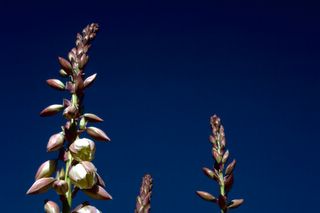 | (Yucca glauca) AKA "soapweed", "beargrass", and "Spanish bayonet" grows in a wide range from Canada to the Mexican border and may be found at elevations of more than 8,000 ft. |
Text references Native Wildflowers of the North Dakota Grasslands by Harold A. Kantrud State Trees and State Flowers by USDA
Leave a comment, make a request, Let this small sampling be a guide to better quality, more plentiful, public domain, royalty free, copyright free, high resolution, images, stock photos, jpeg, jpg, free for commercial use, clip art, clipart, clip-art.
Sunday, July 24, 2005
Black-eyed Susan - Maryland State Flower
Black-eyed Susan (Rudbeckia hirta) - Maryland State Flower Description: Black-eyed susan is an annual or short-lived perennial herb. It has hairy, ovate to lance-shaped leaves and stems which are scratchy to the touch. The yellow flower heads may be up to 3 inches in diameter and have purplish to black centers. It typically flowers from June to July. Fall germinating seedlings and perenniating plants overwinter as a low-growing rosette of leaves.
Uses: This plant is used mainly for landscape beautification. It has potential for use in cultivated, garden situations, in naturalized prairie or meadow plantings, and along roadsides.
Site adaptation: Black-eyed susan prefers full sun, but can be grown in light shade. On sites that are heavily shaded, plants produce few flowers and become tall and leggy. It is adapted many soil types, but prefers a well-drained soil. It generally will not persist on poorly drained sites. When growing on rich soils, high in organic matter, plants produce rank growth and are subject to wind or rain damage.
All photographs in the USDA Online Photography Center site are in the public domain. You may use them as you wish, with our blessing, however they may not be used to infer or imply USDA endorsement of any product or position. Neither should they be used to distort the reality of the image they portray.
Leave a comment, make a request, Let this small sampling be a guide to better quality, more plentiful, public domain, royalty free, copyright free, high resolution, images, stock photos, jpeg, jpg, free for commercial use, clip art, clipart, clip-art.
Uses: This plant is used mainly for landscape beautification. It has potential for use in cultivated, garden situations, in naturalized prairie or meadow plantings, and along roadsides.
Site adaptation: Black-eyed susan prefers full sun, but can be grown in light shade. On sites that are heavily shaded, plants produce few flowers and become tall and leggy. It is adapted many soil types, but prefers a well-drained soil. It generally will not persist on poorly drained sites. When growing on rich soils, high in organic matter, plants produce rank growth and are subject to wind or rain damage.
All photographs in the USDA Online Photography Center site are in the public domain. You may use them as you wish, with our blessing, however they may not be used to infer or imply USDA endorsement of any product or position. Neither should they be used to distort the reality of the image they portray.
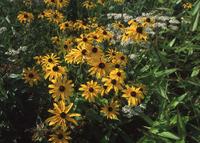 | Black-eyed Susan (Rudbeckia hirta) The Black Eyed Susan has been the official Maryland flower since 1918. A yellow daisy or cornflower, it blooms in late summer. |
Leave a comment, make a request, Let this small sampling be a guide to better quality, more plentiful, public domain, royalty free, copyright free, high resolution, images, stock photos, jpeg, jpg, free for commercial use, clip art, clipart, clip-art.
Saturday, July 23, 2005
California Poppy - California State Flower
California Poppy - California State Flower. This pretty plant, E. Californica, is one of those which give so marked an aspect to the fields of California, which at times are sheets of various colors, from the profusion of wild flowers.
The Eschscholtzia is one of our prettiest border annuals, with bright orange or yellow flowers, which contrast well with the fine cut, glaucous green foliage.
The plant is ornamental in leaf, bud, flower, and seed, and deserves a place in every garden. Its culture is very simple, being only to sow the seeds where the plants are to remain, and to thin out the plants when too thick.
Usually the seed will sow itself, and plants come up year after year. The plants, like all of the poppy family, transplant badly from the long, bare tap-roots, which are wanting in fibres.
For a mass of color this plant is very effective: the only objection to it is, that the flowers only expand in sunshine. We regard it, however, as one of our best hardy annuals.
who dropped anchor in San Francisco in 1816 in a bay surrounded by hills of the golden flowers. Also sometimes known as the flame flower, la amapola, and copa de oro (cup of gold), the poppy grows wild throughout California. It became the state flower in 1903. Every year April 6 is California Poppy Day, and Governor Wilson proclaimed May 13-18, 1996, Poppy Week. Source; library.ca.gov/
This file is a work of a National Park Service employee, taken or made during the course of the person's official duties. As a work of the U.S. federal government, the file is in the public domain. You are free to use this image without a release from the National Park Service. However, the photographs and images must not be used to imply National Park Service endorsement of a product, service, organization or individual.
Generally speaking, works created by U.S. Government employees are not eligible for copyright protection in the United States. See Circular 1 "COPYRIGHT BASICS" PDF from the U.S. Copyright Office.
California poppy (Eschscholzia californica californica)
Author: Kaldari. This file is made available under the Creative Commons CC0 1.0 Universal Public Domain Dedication. The person who associated a work with this deed has dedicated the work to the public domain by waiving all of his or her rights to the work worldwide under copyright law, including all related and neighboring rights, to the extent allowed by law. You can copy, modify, distribute and perform the work, even for commercial purposes, all without asking permission.
Friday, July 22, 2005
Long-Leaved Paintbrush - Wyoming State Flower
INDIAN PAINT BRUSH. PAINTED CUP (Castilleja species)
Some of the leaves of this slender herb are crowded together at the top of the stem and colored brightly with red or yellow so that they form a "painted cup", or suggest a brush that has been dipped in a paint-pot. The flowers are comparatively inconspicuous slender tubes, with two lips and are more or less hidden among these gayly colored leaves.
The Indian Paint Brush is usually a plant of open places. There are many species, all of which are showy. The Narrow-leaved Paint Brush is the state flower of Wyoming. (Figwort Family)
All photographs and images on this page are "public domain" images. The credit lines are listed in the captions. You are free to use these images without a release from the National Park Service. However, the photographs and images must not be used to imply National Park Service endorsement of a product, service, organization or individual. Download Full High Resolution Image
Grand Canyon National Park Museum Collection.
Leave a comment, make a request, Let this small sampling be a guide to better quality, more plentiful, public domain, royalty free, copyright free, high resolution, images, stock photos, jpeg, jpg, free for commercial use, clip art, clipart, clip-art.
Some of the leaves of this slender herb are crowded together at the top of the stem and colored brightly with red or yellow so that they form a "painted cup", or suggest a brush that has been dipped in a paint-pot. The flowers are comparatively inconspicuous slender tubes, with two lips and are more or less hidden among these gayly colored leaves.
The Indian Paint Brush is usually a plant of open places. There are many species, all of which are showy. The Narrow-leaved Paint Brush is the state flower of Wyoming. (Figwort Family)
All photographs and images on this page are "public domain" images. The credit lines are listed in the captions. You are free to use these images without a release from the National Park Service. However, the photographs and images must not be used to imply National Park Service endorsement of a product, service, organization or individual. Download Full High Resolution Image
Grand Canyon National Park Museum Collection.
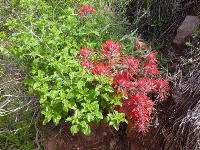 | THE BRIGHT RED FLOWERS OF LONG-LEAVED PAINTBRUSH (CASTILLEJA LINARAIEFOLIA) GRACE THE INNER CANYON TRAILS OF GRAND CANYON N.P. NPS PHOTO. WYOMING STATE FLOWER |
Leave a comment, make a request, Let this small sampling be a guide to better quality, more plentiful, public domain, royalty free, copyright free, high resolution, images, stock photos, jpeg, jpg, free for commercial use, clip art, clipart, clip-art.
Holidays
New Years
4th of July
National Hispanic Heritage Month
we recognize the many contributions of Hispanic Americans. (3 Images). National Hispanic Heritage Month 2 - Hispanic Americans have pursued their dreams and contributed to the strength and vitality of our Nation. (3 Images)
Rosh Hashanah (Rosh ha Shanah)
Ramadan
Yom Kippur
Columbus Day
Halloween
Chanucka
Christmas
Leave a comment, make a request, Let this small sampling be a guide to better quality, more plentiful, public domain, royalty free, copyright free, high resolution, images, stock photos, jpeg, jpg, free for commercial use, clip art, clipart, clip-art. more at Public Domain Clip Art and clip art or public domain and 4th of July
![Happy New Year, Library of Congress, Prints & Photographs Division, [reproduction number, e.g., LC-USZ62-90145]](https://blogger.googleusercontent.com/img/b/R29vZ2xl/AVvXsEiFS3Ao6bP-FSeCmnDMMy4O4lDk9-gsQJf6-0IpRJX-1PsqyJIZIRfpwJYG1C_VPQxck8hB49dlMfWU004Ka_oITCsIn5nsgTt40_IepcNd7OZelJPzetx47gohRYiPb_jzrR3r/s200/holidays_happy_new_year.jpg) | Happy new year - Currier & Ives--Happy new year, Chinese, Lunar New Year, Rosh Hashanah, (11 Images) |
4th of July
 | Fourth of July fireworks, Lexington and Concord, Continental Congress, Declaration of Independence, Old Guard Colonial Color Guard (11 Images) |
National Hispanic Heritage Month
 | National Hispanic Heritage Month - During National Hispanic Heritage Month, |
Rosh Hashanah (Rosh ha Shanah)
 | Rosh Hashanah (Rosh ha Shanah) - Shofar. Sabbath Horn. Yemenite Jew. Rosh Hashanah celebrates the creation of the world and is a time for reflection and self evaluation. (2 Images) |
Ramadan
 | Ramadan - Our best wishes for a blessed Ramadan. Ramadan Mubarak. (3 Images) |
Yom Kippur
 | Yom Kippur - Jews Praying in the Synagogue on Yom Kippur. Vienna. 1878. Oil on canvas Tel Aviv Museum of Art. (2 Images) |
Columbus Day
![Columbus Day -[Christopher Columbus]. CREATED, PUBLISHED, c1908. (3 Images)](http://photos1.blogger.com/blogger2/7536/1681/200/columbus_day_2.jpg) | Columbus Day -[Christopher Columbus]. CREATED, PUBLISHED, c1908. (3 Images) |
Halloween
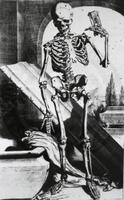 | Halloween - Pumpkins, Witches, Ghosts and Goblins. Skeletons, Skulls and Bats. Trick or Treat and all things Halloween are here (21 Images). |
Chanucka
 | Chanukah - 7-branch Days-of-Creation menorah, Chanukah, Hanukkah, Hannukah, Hanukah, Chanuka, Chanukkah, we recite the blessings, and light the lights from left to right. So, the first one we prepare in the Menorah is the last one we light. (6 Images) |
Christmas
 | Christmas - Santa Claus, Creche, Ornaments, Reindeer, Angels, Christmas Trees. The Spirit of Christmas past, present and future, candy and Sugar Plums, rare and more (30 Images). |
Leave a comment, make a request, Let this small sampling be a guide to better quality, more plentiful, public domain, royalty free, copyright free, high resolution, images, stock photos, jpeg, jpg, free for commercial use, clip art, clipart, clip-art. more at Public Domain Clip Art and clip art or public domain and 4th of July
Thursday, July 21, 2005
UH-60L Blackhawk
Mission: Provide air assault, general support, aeromedical evacuation, command and control and special operations support to combat and stability and support operations.
Entered Army Service: 1979
Description and Specifications: The UH 60 Black Hawk is a utility tactical transport helicopter that replaces the UH-1 "Huey". The versatile Black Hawk has enhanced the overall mobility of The Army, due to dramatic improvements in troop capacity and cargo lift capability, and will serve as The Army's utility helicopter in the Objective Force. On the asymmetric battlefield, it provides the commander the agility to get to the fight quicker and to mass effects throughout the battlespace across the full spectrum of conflict. An entire 11-person, fully-equipped infantry squad can be lifted in a single Black Hawk, transported faster than in predecessor systems, in most weather conditions. The Black Hawk can reposition a 105 mm Howitzer, its crew of six, and lift up to 30 rounds of ammunition in a single lift. The aircraft's critical components and systems are armored or redundant, and its airframe is designed to progressively crush on impact to protect the crew and passengers.
101st Combat Aviation Brigade UH-60 Blackhawk helicopter during Operation Swarmer by Sgt. Ryan Matson, March 27, 2006
Request credit be given as "Photo Courtesy of U.S. Army" and credit to individual photographer whenever possible.
Entered Army Service: 1979
Description and Specifications: The UH 60 Black Hawk is a utility tactical transport helicopter that replaces the UH-1 "Huey". The versatile Black Hawk has enhanced the overall mobility of The Army, due to dramatic improvements in troop capacity and cargo lift capability, and will serve as The Army's utility helicopter in the Objective Force. On the asymmetric battlefield, it provides the commander the agility to get to the fight quicker and to mass effects throughout the battlespace across the full spectrum of conflict. An entire 11-person, fully-equipped infantry squad can be lifted in a single Black Hawk, transported faster than in predecessor systems, in most weather conditions. The Black Hawk can reposition a 105 mm Howitzer, its crew of six, and lift up to 30 rounds of ammunition in a single lift. The aircraft's critical components and systems are armored or redundant, and its airframe is designed to progressively crush on impact to protect the crew and passengers.
 | Iraqi Army Soldiers and U.S. troops from Company A, Third Battalion, 187th Infantry Regiment, recover to a 5th Battalion, |
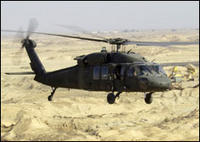 | Photos courtesy of the Department of Defense. These photos appeared on www.army.mil. Images on the Army Web site are cleared for release and are considered in the public domain. |
Request credit be given as "Photo Courtesy of U.S. Army" and credit to individual photographer whenever possible.
Wednesday, July 20, 2005
AV-8B Harrier II+
Download Full High Resolution Image All information on navy.mil is public domain and may be distributed or copied unless otherwise specified. Use of appropriate byline/photo/image credits is requested.
Leave a comment, make a request, Let this small sampling be a guide to better quality, more plentiful, public domain, royalty free, copyright free, high resolution, images, stock photos, jpeg, jpg, free for commercial use, clip art, clipart, clip-art. more at Public Domain Clip Art and clip art or public domain and Harrier
RELATED: Sunday, June 19, 2005 C-5 Galaxy, Sunday, June 19, 2005 B-2 Spirit, Monday, June 20, 2005 B-52B, Tuesday, June 21, 2005 B-1 Lancer, Wednesday, June 22, 2005 U-2 Dragon Lady, Thursday, June 23, 2005 A-10 Thunderbolt II, Friday, June 24, 2005 F-117 Nighthawk, Saturday, June 25, 2005 F-15E Strike Eagle, Sunday, June 26, 2005 F-16C Fighting Falcon, Monday, June 27, 2005 F/A-22 Raptor, Tuesday, June 28, 2005 X-35, Joint Strike Fighter, Wednesday, June 29, 2005 CH-47 Chinook, Thursday, June 30, 2005 HH-60G Pave Hawk, Friday, July 01, 2005 MH-53J Pave Low IIIE, Saturday, July 02, 2005 UH-1N Huey, Sunday, July 03, 2005 E-3 Sentry, Monday, July 04, 2005 E-8C Joint STARS, Tuesday, July 05, 2005 RC-135U Combat Sent, Wednesday, July 06, 2005 CV-22 Osprey, Thursday, July 07, 2005 Air Force One, Friday, July 08, 2005 KC-10A Extender, Saturday, July 09, 2005 T-38 Talon, Sunday, July 10, 2005 T-6A Texan II, Monday, July 11, 2005 T-37 Tweet, Tuesday, July 12, 2005 T-43A Trainer, Wednesday, July 13, 2005 C-130 Hercules, Thursday, July 14, 2005 C-141 Starlifter, Friday, July 15, 2005 C-17 Globemaster III, Saturday, July 16, 2005 C-21A, Sunday, July 17, 2005 F-18 Hornet, Monday, July 18, 2005 E-2C Hawkeye, Tuesday, July 19, 2005 F-14D Tomcat, Wednesday, July 20, 2005 AV-8B Harrier II+, Thursday, July 21, 2005 UH-60L Blackhawk, Thursday, September 07, 2006 Science and Technology, North American's X-15, Sunday, September 03, 2006 Science and Technology, Bell X-1 Rocket Plane, Saturday, September 30, 2006 Science and Technology, SR-71 Blackbird
Leave a comment, make a request, Let this small sampling be a guide to better quality, more plentiful, public domain, royalty free, copyright free, high resolution, images, stock photos, jpeg, jpg, free for commercial use, clip art, clipart, clip-art. more at Public Domain Clip Art and clip art or public domain and Harrier
RELATED: Sunday, June 19, 2005 C-5 Galaxy, Sunday, June 19, 2005 B-2 Spirit, Monday, June 20, 2005 B-52B, Tuesday, June 21, 2005 B-1 Lancer, Wednesday, June 22, 2005 U-2 Dragon Lady, Thursday, June 23, 2005 A-10 Thunderbolt II, Friday, June 24, 2005 F-117 Nighthawk, Saturday, June 25, 2005 F-15E Strike Eagle, Sunday, June 26, 2005 F-16C Fighting Falcon, Monday, June 27, 2005 F/A-22 Raptor, Tuesday, June 28, 2005 X-35, Joint Strike Fighter, Wednesday, June 29, 2005 CH-47 Chinook, Thursday, June 30, 2005 HH-60G Pave Hawk, Friday, July 01, 2005 MH-53J Pave Low IIIE, Saturday, July 02, 2005 UH-1N Huey, Sunday, July 03, 2005 E-3 Sentry, Monday, July 04, 2005 E-8C Joint STARS, Tuesday, July 05, 2005 RC-135U Combat Sent, Wednesday, July 06, 2005 CV-22 Osprey, Thursday, July 07, 2005 Air Force One, Friday, July 08, 2005 KC-10A Extender, Saturday, July 09, 2005 T-38 Talon, Sunday, July 10, 2005 T-6A Texan II, Monday, July 11, 2005 T-37 Tweet, Tuesday, July 12, 2005 T-43A Trainer, Wednesday, July 13, 2005 C-130 Hercules, Thursday, July 14, 2005 C-141 Starlifter, Friday, July 15, 2005 C-17 Globemaster III, Saturday, July 16, 2005 C-21A, Sunday, July 17, 2005 F-18 Hornet, Monday, July 18, 2005 E-2C Hawkeye, Tuesday, July 19, 2005 F-14D Tomcat, Wednesday, July 20, 2005 AV-8B Harrier II+, Thursday, July 21, 2005 UH-60L Blackhawk, Thursday, September 07, 2006 Science and Technology, North American's X-15, Sunday, September 03, 2006 Science and Technology, Bell X-1 Rocket Plane, Saturday, September 30, 2006 Science and Technology, SR-71 Blackbird
Tuesday, July 19, 2005
F-14D Tomcat
Description: The F-14 Tomcat is a supersonic, twin-engine, variable sweep wing, two-place strike fighter manufactured by Grumman Aircraft Corporation. The multiple tasks of navigation, target acquisition, electronic counter measures (ECM), and weapons employment are divided between the pilot and the radar intercept officer (RIO). Primary missions include precision strike against ground targets, air superiority, and fleet air defense.
Features: As a Strike Fighter, the Tomcat is capable of deploying an assortment of air-to-ground ordnance (MK-80 series GP bombs, LGBs and JDAM) in various configurations, while simultaneously carrying the AIM-7, AIM-9 and AIM-54 air-to-air missiles. The F-14 also has the LANTIRN targeting system that allows delivery of various laser-guided bombs for precision strikes in air-to-ground combat missions and for battle damage assessment. With its Fast Tactical Imagery (FTI) system the F-14 can transmit and receive targeting/reconnaissance imagery in-flight to provide time sensitive strike capability. A number of F-14s also carry the Tactical Air Reconnaissance Pod System (TARPS) providing in-theater tactical reconnaissance.
Background: The F-14 has completed its decommissioning from the U.S. Navy. It was slated to remain in service through at least 2008, but all F-14A and F-14B airframes have already been retired, and the last two squadrons, the VF-31 Tomcatters and the VF-213 Black Lions, both flying the "D" models, arrived for their last fly-in at Naval Air Station Oceana on March 10, 2006. The F-14 Tomcat was officially retired on September 22, 2006 at Naval Air Station Oceana.
recently transferred from Fighter Squadron Three One (VF-31), is painted in retro 1970’s-era markings and will be the last Tomcat that VF-101 will possess till disestablishment in September 2005. VF-101 is the U.S. Navy's sole Fleet Replacement Squadron for the F-14 Tomcat, training aircrew and maintenance personnel for the fleet. The squadron trains pilots, radar intercept officers, and enlisted personnel in the operation and employment of the F-14 Tomcat fighter. U.S. Navy photo by Lt. Rico Harris (RELEASED) Download Full High Resolution Image All information on navy.mil is public domain and may be distributed or copied unless otherwise specified. Use of appropriate byline/photo/image credits is requested.
Leave a comment, make a request, Let this small sampling be a guide to better quality, more plentiful, public domain, royalty free, copyright free, high resolution, images, stock photos, jpeg, jpg, free for commercial use, clip art, clipart, clip-art.
Features: As a Strike Fighter, the Tomcat is capable of deploying an assortment of air-to-ground ordnance (MK-80 series GP bombs, LGBs and JDAM) in various configurations, while simultaneously carrying the AIM-7, AIM-9 and AIM-54 air-to-air missiles. The F-14 also has the LANTIRN targeting system that allows delivery of various laser-guided bombs for precision strikes in air-to-ground combat missions and for battle damage assessment. With its Fast Tactical Imagery (FTI) system the F-14 can transmit and receive targeting/reconnaissance imagery in-flight to provide time sensitive strike capability. A number of F-14s also carry the Tactical Air Reconnaissance Pod System (TARPS) providing in-theater tactical reconnaissance.
Background: The F-14 has completed its decommissioning from the U.S. Navy. It was slated to remain in service through at least 2008, but all F-14A and F-14B airframes have already been retired, and the last two squadrons, the VF-31 Tomcatters and the VF-213 Black Lions, both flying the "D" models, arrived for their last fly-in at Naval Air Station Oceana on March 10, 2006. The F-14 Tomcat was officially retired on September 22, 2006 at Naval Air Station Oceana.
recently transferred from Fighter Squadron Three One (VF-31), is painted in retro 1970’s-era markings and will be the last Tomcat that VF-101 will possess till disestablishment in September 2005. VF-101 is the U.S. Navy's sole Fleet Replacement Squadron for the F-14 Tomcat, training aircrew and maintenance personnel for the fleet. The squadron trains pilots, radar intercept officers, and enlisted personnel in the operation and employment of the F-14 Tomcat fighter. U.S. Navy photo by Lt. Rico Harris (RELEASED) Download Full High Resolution Image All information on navy.mil is public domain and may be distributed or copied unless otherwise specified. Use of appropriate byline/photo/image credits is requested.
Leave a comment, make a request, Let this small sampling be a guide to better quality, more plentiful, public domain, royalty free, copyright free, high resolution, images, stock photos, jpeg, jpg, free for commercial use, clip art, clipart, clip-art.
Monday, July 18, 2005
E-2C Hawkeye
Description: The E-2 Hawkeye is the Navy's all-weather, carrier-based tactical battle management airborne early warning, command and control aircraft. The E-2 is a twin engine, five crewmember, high-wing turboprop aircraft with a 24-foot diameter radar rotodome attached to the upper fuselage.
Features: The Hawkeye provides all-weather airborne early warning, airborne battle management and command and control functions for the Carrier Strike Group and Joint Force Commander. Additional missions include surface surveillance coordination, air interdiction, offensive and defensive counter air control, close air support coordination, time critical strike coordination, search and rescue airborne coordination and communications relay. An integral component of the Carrier Strike Group air wing, the E-2C uses computerized radar, Identification Friend or Foe and electronic surveillance sensors to provide early warning, threat analysis against potentially hostile air and surface targets.
Background: The continuous improvements in early airborne radars by 1956 led to the concept of an airborne early warning and command and control aircraft. The first aircraft to perform this mission was the Grumman E-1 Tracer (a variant of the S-2 Tracker anti-submarine aircraft), which saw service from 1954 to 1964. The E-1's successor, the E-2 Hawkeye, was the first carrier-based aircraft designed from the outset for the all-weather airborne early warning and command and control mission.
takes to the air after conducting a touch-and-go landing on the flight deck aboard the Nimitz-class aircraft carrier USS Harry S. Truman (CVN 75). Truman is currently conducting carrier qualifications in the Atlantic Ocean. U.S. Navy photo by Photographer's Mate 3rd Class Kristopher Wilson (RELEASED) Download Full High Resolution Image All information on navy.mil is public domain and may be distributed or copied unless otherwise specified. Use of appropriate byline/photo/image credits is requested.
Leave a comment, make a request, Let this small sampling be a guide to better quality, more plentiful, public domain, royalty free, copyright free, high resolution, images, stock photos, jpeg, jpg, free for commercial use, clip art, clipart, clip-art.
Features: The Hawkeye provides all-weather airborne early warning, airborne battle management and command and control functions for the Carrier Strike Group and Joint Force Commander. Additional missions include surface surveillance coordination, air interdiction, offensive and defensive counter air control, close air support coordination, time critical strike coordination, search and rescue airborne coordination and communications relay. An integral component of the Carrier Strike Group air wing, the E-2C uses computerized radar, Identification Friend or Foe and electronic surveillance sensors to provide early warning, threat analysis against potentially hostile air and surface targets.
Background: The continuous improvements in early airborne radars by 1956 led to the concept of an airborne early warning and command and control aircraft. The first aircraft to perform this mission was the Grumman E-1 Tracer (a variant of the S-2 Tracker anti-submarine aircraft), which saw service from 1954 to 1964. The E-1's successor, the E-2 Hawkeye, was the first carrier-based aircraft designed from the outset for the all-weather airborne early warning and command and control mission.
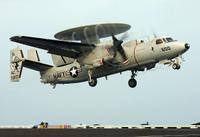 | 050712-N-5345W-024 jpg Atlantic Ocean (July 12, 2005) - An E-2C Hawkeye, assigned to the "Seahawks" of Carrier Airborne Early Warning Squadron One Two Six (VAW-126), |
takes to the air after conducting a touch-and-go landing on the flight deck aboard the Nimitz-class aircraft carrier USS Harry S. Truman (CVN 75). Truman is currently conducting carrier qualifications in the Atlantic Ocean. U.S. Navy photo by Photographer's Mate 3rd Class Kristopher Wilson (RELEASED) Download Full High Resolution Image All information on navy.mil is public domain and may be distributed or copied unless otherwise specified. Use of appropriate byline/photo/image credits is requested.
Leave a comment, make a request, Let this small sampling be a guide to better quality, more plentiful, public domain, royalty free, copyright free, high resolution, images, stock photos, jpeg, jpg, free for commercial use, clip art, clipart, clip-art.
Sunday, July 17, 2005
F-18 Hornet
Description: All-weather fighter and attack aircraft. The single-seat F/A-18 Hornet is the nation's first strike-fighter. It was designed for traditional strike applications such as interdiction and close air support without compromising its fighter capabilities. With its excellent fighter and self-defense capabilities, the F/A-18 at the same time increases strike mission survivability and supplements the F-14 Tomcat in fleet air defense. F/A-18 Hornets are currently operating in 37 tactical squadrons from air stations world-wide, and from 10 aircraft carriers. The U.S. Navy's Blue Angels Flight Demonstration Squadron proudly flies them. The Hornet comprises the aviation strike force for seven foreign customers including Canada, Australia, Finland, Kuwait, Malaysia, Spain and Switzerland.
The newest model, Super Hornet, is highly capable across the full mission spectrum: air superiority, fighter escort, reconnaissance, aerial refueling, close air support, air defense suppression and day/night precision strike. Compared to the original F/A-18 A through D models, Super Hornet has longer range, an aerial refueling capability, increased survivability/lethality and improved carrier suitability. [Capability of precision-guided munitions: JDAM (all variants) and JSOW. JASSM in the future]
Features: The F/A-18 Hornet, an all-weather aircraft, is used as an attack aircraft as well as a fighter. In its fighter mode, the F/A-18 is used primarily as a fighter escort and for fleet air defense; in its attack mode, it is used for force projection, interdiction and close and deep air support.
with a KC-135R from the 319th Air Expeditionary Group. The 319th AEG is deployed to a forward deployed location in support of Operation Enduring Freedom. U.S. Air Force photo by Tech Sgt. Scott Reed (RELEASED) Download Full High Resolution Image All information on navy.mil is public domain and may be distributed or copied unless otherwise specified. Use of appropriate byline/photo/image credits is requested.
Leave a comment, make a request, Let this small sampling be a guide to better quality, more plentiful, public domain, royalty free, copyright free, high resolution, images, stock photos, jpeg, jpg, free for commercial use, clip art, clipart, clip-art.
The newest model, Super Hornet, is highly capable across the full mission spectrum: air superiority, fighter escort, reconnaissance, aerial refueling, close air support, air defense suppression and day/night precision strike. Compared to the original F/A-18 A through D models, Super Hornet has longer range, an aerial refueling capability, increased survivability/lethality and improved carrier suitability. [Capability of precision-guided munitions: JDAM (all variants) and JSOW. JASSM in the future]
Features: The F/A-18 Hornet, an all-weather aircraft, is used as an attack aircraft as well as a fighter. In its fighter mode, the F/A-18 is used primarily as a fighter escort and for fleet air defense; in its attack mode, it is used for force projection, interdiction and close and deep air support.
with a KC-135R from the 319th Air Expeditionary Group. The 319th AEG is deployed to a forward deployed location in support of Operation Enduring Freedom. U.S. Air Force photo by Tech Sgt. Scott Reed (RELEASED) Download Full High Resolution Image All information on navy.mil is public domain and may be distributed or copied unless otherwise specified. Use of appropriate byline/photo/image credits is requested.
Leave a comment, make a request, Let this small sampling be a guide to better quality, more plentiful, public domain, royalty free, copyright free, high resolution, images, stock photos, jpeg, jpg, free for commercial use, clip art, clipart, clip-art.
Saturday, July 16, 2005
C-21A
Mission: The C-21 is a twin turbofan engine aircraft used for cargo and passenger airlift. The aircraft is the military version of the Lear Jet 35A business jet. In addition to providing cargo and passenger airlift, the aircraft is capable of transporting one litter or five ambulatory patients during aeromedical evacuations.
Features: The turbofan engines are pod-mounted on the sides of the rear fuselage. The swept-back wings have hydraulically actuated, single-slotted flaps. The aircraft has a retractable tricycle landing gear, single steerable nose gear and multiple-disc hydraulic brakes.
The C-21 can carry eight passengers and 42 cubic feet (1.26 cubic meters) of cargo. The fuel capacity of the C-21 is 931 gallons (3,537.8 liters) with refueling accomplished at ground level through each wingtip tank. The safety and operational capabilities of the C-21 are increased by the autopilot, color weather radar and tactical air navigation system, as well as high frequency, very high frequency and ultra high frequency radios.
The aircraft has a crew of two and may be flown from either cockpit seat. It is equipped with an automatic navigation system to enhance crew efficiency. Four cathode ray tubes display essential information to the pilots.
The aircraft has a retractable tricycle landing gear, single steerable nose gear and multiple-disc hydraulic brakes. The C-21A can carry eight passengers and 42 cubic feet (1.26 cubic meters) of cargo. The fuel capacity ofthe C-21A is 931 gallons (3,537.8 liters) carried in wingtip tanks. The safety and operational capabilities of the C-21A are increased by the autopilot, color weather radar and tactical air navigation (TACAN) system, as well as HF, VHF and UHF radios. (U.S. Air Force photo) Download Full High Resolution Image Information presented on Air Force Link is considered public information and may be distributed or copied. Use of appropriate byline/photo/image credits is requested.
Leave a comment, make a request, Let this small sampling be a guide to better quality, more plentiful, public domain, royalty free, copyright free, high resolution, images, stock photos, jpeg, jpg, free for commercial use, clip art, clipart, clip-art.
Features: The turbofan engines are pod-mounted on the sides of the rear fuselage. The swept-back wings have hydraulically actuated, single-slotted flaps. The aircraft has a retractable tricycle landing gear, single steerable nose gear and multiple-disc hydraulic brakes.
The C-21 can carry eight passengers and 42 cubic feet (1.26 cubic meters) of cargo. The fuel capacity of the C-21 is 931 gallons (3,537.8 liters) with refueling accomplished at ground level through each wingtip tank. The safety and operational capabilities of the C-21 are increased by the autopilot, color weather radar and tactical air navigation system, as well as high frequency, very high frequency and ultra high frequency radios.
The aircraft has a crew of two and may be flown from either cockpit seat. It is equipped with an automatic navigation system to enhance crew efficiency. Four cathode ray tubes display essential information to the pilots.
The aircraft has a retractable tricycle landing gear, single steerable nose gear and multiple-disc hydraulic brakes. The C-21A can carry eight passengers and 42 cubic feet (1.26 cubic meters) of cargo. The fuel capacity ofthe C-21A is 931 gallons (3,537.8 liters) carried in wingtip tanks. The safety and operational capabilities of the C-21A are increased by the autopilot, color weather radar and tactical air navigation (TACAN) system, as well as HF, VHF and UHF radios. (U.S. Air Force photo) Download Full High Resolution Image Information presented on Air Force Link is considered public information and may be distributed or copied. Use of appropriate byline/photo/image credits is requested.
Leave a comment, make a request, Let this small sampling be a guide to better quality, more plentiful, public domain, royalty free, copyright free, high resolution, images, stock photos, jpeg, jpg, free for commercial use, clip art, clipart, clip-art.
Friday, July 15, 2005
C-17 Globemaster III
Mission: The C-17 Globemaster III is the newest, most flexible cargo aircraft to enter the airlift force. The C-17 is capable of rapid strategic delivery of troops and all types of cargo to main operating bases or directly to forward bases in the deployment area. The aircraft can perform tactical airlift and airdrop missions and can also transport litters and ambulatory patients during aeromedical evacuations when required. The inherent flexibility and performance of the C-17 force improve the ability of the total airlift system to fulfill the worldwide air mobility requirements of the United States.
The ultimate measure of airlift effectiveness is the ability to rapidly project and sustain an effective combat force close to a potential battle area. Threats to U.S. interests have changed in recent years, and the size and weight of U.S.-mechanized firepower and equipment have grown in response to improved capabilities of potential adversaries. This trend has significantly increased air mobility requirements, particularly in the area of large or heavy outsize cargo. As a result, newer and more flexible airlift aircraft are needed to meet potential armed contingencies, peacekeeping or humanitarian missions worldwide. The C-17 is capable of meeting today's demanding airlift missions.
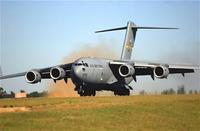 | Combat landing NORTHFIELD AIR BASE, S.C. - A C-17 Globemaster III from the 437th Airlift Wing at Charleston Air Force Base, S.C., performs a combat landing during an incentive flight here recently. |
Generally speaking, works created by U.S. Government employees are not eligible for copyright protection in the United States. See Circular 1 "COPYRIGHT BASICS" PDF from the U.S. Copyright Office.
C-17 Globemaster IIIs provide intra-theater heavy airlift support, helping to sustain operations throughout Afghanistan, Iraq and the Horn of Africa. (U.S. Air Force photo/Tech. Sgt. Shane A. Cuomo)
Thursday, July 14, 2005
C-141 Starlifter
Since 1965, the C-141 Starlifter has been one of the "workhorses" of the Air Force. The aircraft fulfills the vast spectrum of airlift requirements through its ability to airlift combat forces over long distances, deliver those forces and their equipment either by air, land or airdrop, resupply forces and transport the sick and wounded from the hostile area to advanced medical facilities.
The Starlifter was the aircraft dubbed the "Hanoi Taxi" by repatriating more than 500 American prisoners of war held in North Vietnam. C-141s brought flood relief to Minnesota in 1979, to the Azores in 1980 and to Louisiana in 1983. During Desert Storm, C-141s flew more than 37,000 departures with an on-time record above 90 percent. The Starlifter has logged more than 10 million hours, including a record set in 1981 when a C-141 flew 67,000 pounds of cargo non-stop from New Jersey to Saudi Arabia, refueling three times in flight.
The first C-141A, delivered to Tinker Air Force Base, Okla., in October 1964, began squadron operations in April 1965. The C-141 was the first jet transport from which U.S. Army paratroopers jumped, and the first to land in the Antarctic.
The aircraft has undergone various modifications, and all active C-141s are the "B" model.
either by airland or airdrop, re-supply employed forces, and extract the sick and wounded from the hostile area to advanced medical facility. (U.S. Air Force photo) Download Full High Resolution Image
Information presented on Air Force Link is considered public information and may be distributed or copied. Use of appropriate byline/photo/image credits is requested.
This file is a work of an employee of the U.S. Air Force, taken or made during the course of the person's official duties. As a work of the U.S. federal government, the file is in the public domain.
Generally speaking, works created by U.S. Government employees are not eligible for copyright protection in the United States. See Circular 1 "COPYRIGHT BASICS" PDF from the U.S. Copyright Office.
Leave a comment, make a request, public domain, royalty free, copyright free, high resolution, images, stock photos, jpeg, jpg, free for commercial use, clip art, clipart, clip-art.
The Starlifter was the aircraft dubbed the "Hanoi Taxi" by repatriating more than 500 American prisoners of war held in North Vietnam. C-141s brought flood relief to Minnesota in 1979, to the Azores in 1980 and to Louisiana in 1983. During Desert Storm, C-141s flew more than 37,000 departures with an on-time record above 90 percent. The Starlifter has logged more than 10 million hours, including a record set in 1981 when a C-141 flew 67,000 pounds of cargo non-stop from New Jersey to Saudi Arabia, refueling three times in flight.
The first C-141A, delivered to Tinker Air Force Base, Okla., in October 1964, began squadron operations in April 1965. The C-141 was the first jet transport from which U.S. Army paratroopers jumped, and the first to land in the Antarctic.
The aircraft has undergone various modifications, and all active C-141s are the "B" model.
either by airland or airdrop, re-supply employed forces, and extract the sick and wounded from the hostile area to advanced medical facility. (U.S. Air Force photo) Download Full High Resolution Image
Information presented on Air Force Link is considered public information and may be distributed or copied. Use of appropriate byline/photo/image credits is requested.
This file is a work of an employee of the U.S. Air Force, taken or made during the course of the person's official duties. As a work of the U.S. federal government, the file is in the public domain.
Generally speaking, works created by U.S. Government employees are not eligible for copyright protection in the United States. See Circular 1 "COPYRIGHT BASICS" PDF from the U.S. Copyright Office.
Leave a comment, make a request, public domain, royalty free, copyright free, high resolution, images, stock photos, jpeg, jpg, free for commercial use, clip art, clipart, clip-art.
Wednesday, July 13, 2005
C-130 Hercules
The C-130 Hercules primarily performs the tactical portion of the airlift mission. The aircraft is capable of operating from rough, dirt strips and is the prime transport for air dropping troops and equipment into hostile areas.
An Airman from the 189th Airlift Wing gives a thumbs-up during a training flight June 8, 2015, near Little Rock Air Force Base, Ark. The Air Education and Training Command’s 314th AW and Arkansas Air National Guard’s189th AW provide the foundation of combat airlift with initial training in the C-130J Super Hercules and C-130H Hercules. (U.S. Air Force photo/Senior Airman Scott Poe
The C-130 operates throughout the U.S. Air Force, serving with Air Mobility Command, Air Force Special Operations Command, Air Combat Command, U.S. Air Forces in Europe, Pacific Air Forces, Air National Guard and the Air Force Reserve Command, fulfilling a wide range of operational missions in both peace and war situations.
Basic and specialized versions of the aircraft airframe perform a diverse number of roles, including airlift support, Antarctic ice resupply, aeromedical missions, weather reconnaissance, aerial spray missions, firefighting duties for the U.S. Forest Service and natural disaster relief missions.
Features: Using its aft loading ramp and door the C-130 can accommodate a wide variety of oversized cargo, including everything from utility helicopters and six-wheeled armored vehicles to standard palletized cargo and military personnel. In an aerial delivery role, it can airdrop loads up to 42,000 pounds or use its high-flotation landing gear to land and deliver cargo on rough, dirt strips.
The flexible design of the Hercules enables it to be configured for many different missions, allowing for one aircraft to perform the role of many.
These files are a works of an United States Air Force, or the Department of Defense employee, taken or made during the course of the person's official duties. As a work of the U.S. federal government, the file is in the public domain.
Generally speaking, works created by U.S. Government employees are not eligible for copyright protection in the United States. See Circular 1 "COPYRIGHT BASICS" PDF from the U.S. Copyright Office.
The aircraft is capable of operating from rough, dirt strips and is the prime transport for paradropping troops and equipment into hostile areas. (U.S. Air Force photo by Tech. Sgt. Howard Blair) Information presented on Air Force Link is considered public information and may be distributed or copied. Use of appropriate byline/photo/image credits is requested.
Air Force C-130s equipped to fight fires
The Air Force has four wings flying C-130 Hercules aircraft that can be equipped with Modular Airborne Firefighting Systems like the C-130 shown here. (U.S Air Force photo/Tech. Sgt. Rick Sforza)
Leave a comment, make a request, Let this small sampling be a guide to better quality, more plentiful, public domain, royalty free, copyright free, high resolution, images, stock photos, jpeg, jpg, free for commercial use, clip art, clipart, clip-art.
An Airman from the 189th Airlift Wing gives a thumbs-up during a training flight June 8, 2015, near Little Rock Air Force Base, Ark. The Air Education and Training Command’s 314th AW and Arkansas Air National Guard’s189th AW provide the foundation of combat airlift with initial training in the C-130J Super Hercules and C-130H Hercules. (U.S. Air Force photo/Senior Airman Scott Poe
The C-130 operates throughout the U.S. Air Force, serving with Air Mobility Command, Air Force Special Operations Command, Air Combat Command, U.S. Air Forces in Europe, Pacific Air Forces, Air National Guard and the Air Force Reserve Command, fulfilling a wide range of operational missions in both peace and war situations.
Basic and specialized versions of the aircraft airframe perform a diverse number of roles, including airlift support, Antarctic ice resupply, aeromedical missions, weather reconnaissance, aerial spray missions, firefighting duties for the U.S. Forest Service and natural disaster relief missions.
Features: Using its aft loading ramp and door the C-130 can accommodate a wide variety of oversized cargo, including everything from utility helicopters and six-wheeled armored vehicles to standard palletized cargo and military personnel. In an aerial delivery role, it can airdrop loads up to 42,000 pounds or use its high-flotation landing gear to land and deliver cargo on rough, dirt strips.
The flexible design of the Hercules enables it to be configured for many different missions, allowing for one aircraft to perform the role of many.
These files are a works of an United States Air Force, or the Department of Defense employee, taken or made during the course of the person's official duties. As a work of the U.S. federal government, the file is in the public domain.
Generally speaking, works created by U.S. Government employees are not eligible for copyright protection in the United States. See Circular 1 "COPYRIGHT BASICS" PDF from the U.S. Copyright Office.
The aircraft is capable of operating from rough, dirt strips and is the prime transport for paradropping troops and equipment into hostile areas. (U.S. Air Force photo by Tech. Sgt. Howard Blair) Information presented on Air Force Link is considered public information and may be distributed or copied. Use of appropriate byline/photo/image credits is requested.
Air Force C-130s equipped to fight fires
The Air Force has four wings flying C-130 Hercules aircraft that can be equipped with Modular Airborne Firefighting Systems like the C-130 shown here. (U.S Air Force photo/Tech. Sgt. Rick Sforza)
Leave a comment, make a request, Let this small sampling be a guide to better quality, more plentiful, public domain, royalty free, copyright free, high resolution, images, stock photos, jpeg, jpg, free for commercial use, clip art, clipart, clip-art.
Tuesday, July 12, 2005
T-43A Trainer
Mission: The T-43A is a medium-range, swept-wing jet aircraft equipped with modern navigation and communications equipment to train navigators for strategic and tactical aircraft.
Features: The T-43A is the Air Force version of the Boeing 737 transport. One jet engine is mounted under each wing. The exterior differences between the military and commercial aircraft include many small blade-type antennas, sextant ports, a wire antenna for a high-frequency radio and fewer windows.
Inside each T-43A training compartment are two minimum proficiency, two maximum proficiency and 12 student stations. Two stations form a console and instructors can move their seats to the consoles and sit beside students for individual instruction.
The large cabin allows easy access to seating and storage, yet reduces the distance between student stations and instructor positions.
The student-training compartment is equipped with advanced avionics gear identical to Air Force operational aircraft. The equipment includes mapping radar, very high frequency omnidirectional range and tactical air navigation radio systems; inertial navigation systems; radar altimeter and all required communication equipment.
navigator training program. Several T-43s are configured for passengers and provide operational support to assigned commands and the Air National Guard. (U.S. Air Force photo by Master Sgt. Fernando Serna) Download Full High Resolution Image
Information presented on Air Force Link is considered public information and may be distributed or copied. Use of appropriate byline/photo/image credits is requested.
Leave a comment, make a request, Let this small sampling be a guide to better quality, more plentiful, public domain, royalty free, copyright free, high resolution, images, stock photos, jpeg, jpg, free for commercial use, clip art, clipart, clip-art.
Features: The T-43A is the Air Force version of the Boeing 737 transport. One jet engine is mounted under each wing. The exterior differences between the military and commercial aircraft include many small blade-type antennas, sextant ports, a wire antenna for a high-frequency radio and fewer windows.
Inside each T-43A training compartment are two minimum proficiency, two maximum proficiency and 12 student stations. Two stations form a console and instructors can move their seats to the consoles and sit beside students for individual instruction.
The large cabin allows easy access to seating and storage, yet reduces the distance between student stations and instructor positions.
The student-training compartment is equipped with advanced avionics gear identical to Air Force operational aircraft. The equipment includes mapping radar, very high frequency omnidirectional range and tactical air navigation radio systems; inertial navigation systems; radar altimeter and all required communication equipment.
navigator training program. Several T-43s are configured for passengers and provide operational support to assigned commands and the Air National Guard. (U.S. Air Force photo by Master Sgt. Fernando Serna) Download Full High Resolution Image
Information presented on Air Force Link is considered public information and may be distributed or copied. Use of appropriate byline/photo/image credits is requested.
Leave a comment, make a request, Let this small sampling be a guide to better quality, more plentiful, public domain, royalty free, copyright free, high resolution, images, stock photos, jpeg, jpg, free for commercial use, clip art, clipart, clip-art.
Monday, July 11, 2005
T-37 Tweet
The T-37 Tweet formally retired April 3 from Specialized Undergraduate Pilot Training here after 39 years of service as the gateway to the sky for more than 10,000 Air Force aviators.
Columbus Air Force Base was the last Specialized Undergraduate Pilot Training base flying the T-37, but the T-37 will continue to be used at Sheppard AFB, Texas, in the Euro-NATO Joint Jet Pilot Training program.
Vance AFB, Okla., and Laughlin AFB, Texas, phased out the T-37 from their pilot training programs in 2007.
"If you are a flier or a maintainer of any airplane, there is an emotional attachment," said Maj. Gen. Irving L. Halter Jr., the 19th Air Force commander. "The T-37 is a part of the fabric of Air Force aviation as well as American aviation."
The first T-37 arrived at Columbus AFB in 1969 in preparation for the base's realignment from Strategic Air Command to Air Training Command in 1970.
In 1970, Columbus AFB officials undertook the undergraduate pilot training mission, usng the T-37 for its primary training, and the T-38 talon for advanced training.
The T-37 Tweet is a twin-engine jet used for training undergraduate pilots, undergraduate navigator and tactical navigator students in fundamentals of aircraft handling, and instrument, formation and night flying. The twin engines and flying characteristics of the T-37 give student pilots the feel for handling the larger, faster T-38 Talon or T-1A Jayhawk later in the undergraduate pilot training course. The instructor and student sit side by side for more effective training. The cockpit has dual controls, ejection seats and a clamshell-type canopy that can be jettisoned. (Air Force photo by Staff Sgt. Andy Dunaway) Download Full High Resolution Image
Information presented on Air Force Link is considered public information and may be distributed or copied. Use of appropriate byline/photo/image credits is requested.
Leave a comment, make a request, Let this small sampling be a guide to better quality, more plentiful, public domain, royalty free, copyright free, high resolution, images, stock photos, jpeg, jpg, free for commercial use, clip art, clipart, clip-art.
Columbus Air Force Base was the last Specialized Undergraduate Pilot Training base flying the T-37, but the T-37 will continue to be used at Sheppard AFB, Texas, in the Euro-NATO Joint Jet Pilot Training program.
Vance AFB, Okla., and Laughlin AFB, Texas, phased out the T-37 from their pilot training programs in 2007.
"If you are a flier or a maintainer of any airplane, there is an emotional attachment," said Maj. Gen. Irving L. Halter Jr., the 19th Air Force commander. "The T-37 is a part of the fabric of Air Force aviation as well as American aviation."
The first T-37 arrived at Columbus AFB in 1969 in preparation for the base's realignment from Strategic Air Command to Air Training Command in 1970.
In 1970, Columbus AFB officials undertook the undergraduate pilot training mission, usng the T-37 for its primary training, and the T-38 talon for advanced training.
The T-37 Tweet is a twin-engine jet used for training undergraduate pilots, undergraduate navigator and tactical navigator students in fundamentals of aircraft handling, and instrument, formation and night flying. The twin engines and flying characteristics of the T-37 give student pilots the feel for handling the larger, faster T-38 Talon or T-1A Jayhawk later in the undergraduate pilot training course. The instructor and student sit side by side for more effective training. The cockpit has dual controls, ejection seats and a clamshell-type canopy that can be jettisoned. (Air Force photo by Staff Sgt. Andy Dunaway) Download Full High Resolution Image
Information presented on Air Force Link is considered public information and may be distributed or copied. Use of appropriate byline/photo/image credits is requested.
Leave a comment, make a request, Let this small sampling be a guide to better quality, more plentiful, public domain, royalty free, copyright free, high resolution, images, stock photos, jpeg, jpg, free for commercial use, clip art, clipart, clip-art.
Sunday, July 10, 2005
T-6A Texan II
Mission: The T-6A Texan II is a single-engine, two-seat primary trainer designed to train Joint Primary Pilot Training, or JPPT, students in basic flying skills common to U.S. Air Force and Navy pilots.
Features: Produced by Raytheon Aircraft, the T-6A Texan II is a military trainer version of Raytheon's Beech/Pilatus PC-9 Mk II.
Stepped-tandem seating in the single cockpit places one crewmember in front of the other, with the student and instructor positions being interchangeable. A pilot may also fly the aircraft alone from the front seat. Pilots enter the T-6A cockpit through a side-opening, one-piece canopy that has demonstrated resistance to bird strikes at speeds up to 270 knots.
The T-6A has a Pratt & Whitney Canada PT6A-68 turbo-prop engine that delivers 1,100 horsepower. Because of its excellent thrust-to-weight ratio, the aircraft can perform an initial climb of 3,100 feet (944.8 meters) per minute and can reach 18,000 feet (5,486.4 meters) in less than six minutes.
The aircraft is fully aerobatic and features a pressurized cockpit with an anti-G system, ejection seat and an advanced avionics package with sunlight-readable liquid crystal displays.
The trainer is phasing out the aging T-37 fleet throughout Air Education and Training Command. (U.S. Air Force photo by Master Sgt. David Richards) Download Full High Resolution Image. Information presented on Air Force Link is considered public information and may be distributed or copied. Use of appropriate byline/photo/image credits is requested.
Leave a comment, make a request, Let this small sampling be a guide to better quality, more plentiful, public domain, royalty free, copyright free, high resolution, images, stock photos, jpeg, jpg, free for commercial use, clip art, clipart, clip-art.
Features: Produced by Raytheon Aircraft, the T-6A Texan II is a military trainer version of Raytheon's Beech/Pilatus PC-9 Mk II.
Stepped-tandem seating in the single cockpit places one crewmember in front of the other, with the student and instructor positions being interchangeable. A pilot may also fly the aircraft alone from the front seat. Pilots enter the T-6A cockpit through a side-opening, one-piece canopy that has demonstrated resistance to bird strikes at speeds up to 270 knots.
The T-6A has a Pratt & Whitney Canada PT6A-68 turbo-prop engine that delivers 1,100 horsepower. Because of its excellent thrust-to-weight ratio, the aircraft can perform an initial climb of 3,100 feet (944.8 meters) per minute and can reach 18,000 feet (5,486.4 meters) in less than six minutes.
The aircraft is fully aerobatic and features a pressurized cockpit with an anti-G system, ejection seat and an advanced avionics package with sunlight-readable liquid crystal displays.
The trainer is phasing out the aging T-37 fleet throughout Air Education and Training Command. (U.S. Air Force photo by Master Sgt. David Richards) Download Full High Resolution Image. Information presented on Air Force Link is considered public information and may be distributed or copied. Use of appropriate byline/photo/image credits is requested.
Leave a comment, make a request, Let this small sampling be a guide to better quality, more plentiful, public domain, royalty free, copyright free, high resolution, images, stock photos, jpeg, jpg, free for commercial use, clip art, clipart, clip-art.
Saturday, July 09, 2005
Aircraft
Attack
Bombers
Fighters
Helicopters
Recon
Special Duty
Tankers
Trainers
Transport
X Planes
Information presented on Air Force Link is considered public information and may be distributed or copied. Use of appropriate byline/photo/image credits is requested.
All information on navy.mil is public domain and may be distributed or copied unless otherwise specified. Use of appropriate byline/photo/image credits is requested
Images on the Army Web site are cleared for release and are considered in the public domain. Request credit be given as "Photo Courtesy of U.S. Army" and credit to individual photographer whenever possible.
Generally speaking, works created by U.S. Government employees are not eligible for copyright protection in the United States. See Circular 1 "COPYRIGHT BASICS" from the U.S. Copyright Office.
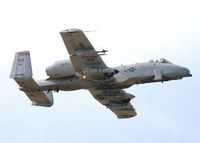 | A-10 Thunderbolt II drops several flares after destroying a ground target during a live-fire engagement as part of Air Warrior II |
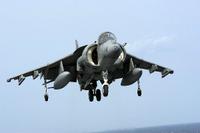 | An AV-8B Harrier II+, assigned to the “Bulldogs” of Marine Attack Squadron Two Two Three (VMA-223), prepares for landing over the flight deck |
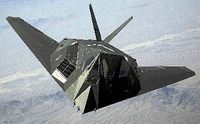 | An F-117 Nighthawk flies over the Nevada desert. The unique design of the single-seat F-117 provides exceptional combat capabilities. |
Bombers
 | A B-2 Spirit soars through the sky after a refueling mission here May 2. The B-2 is assigned to the 393rd Expeditionary Bomb Squadron from Whiteman Air Force Base, Mo. |
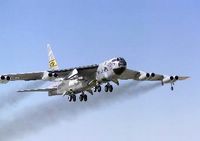 | NASA's B-52B launch aircraft takes off carrying an X-43A hypersonic research aircraft on an evaluation flight Sept. 27. |
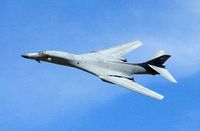 | A B-1 Lancer performs a fly-by during a firepower demonstration here recently. The bomber is from the 7th Bomb Wing at Dyess Air Force Base, Texas. |
Fighters
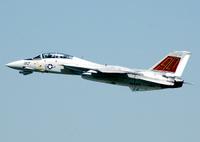 | An F-14D Tomcat, assigned to the “Grim Reapers” of Fighter Squadron One Zero One (VF-101), takes off on an acceptance flight from Naval Air Station Oceana, Va. |
 | An F-15E Strike Eagle from the 494th Fighter Squadron, Royal Air Force Lakenheath, United Kingdom, banks away after receiving fuel during a training mission |
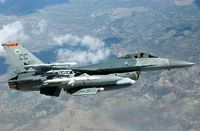 | An F-16C Fighting Falcon, assigned to the 27th Fighter Wing, Cannon Air Force Base, N.M., heads out for a mission |
 | F-18 'Hornet' flies in the post-contact position during an aerial refueling mission with a KC-135R from the 319th Air Expeditionary Group. |
 | the F/A-22 Raptor program is nearing completion of a 13-year development program. (U.S. Air Force photo Judson Brohmer) |
 | LOCKHEED MARTIN X-35, Joint Strike Fighter. Nears completion of flight testing at Edwards Air Force Base, Calif. The JSF is being built in three variants |
Helicopters
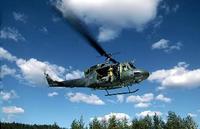 | UH-1N Huey -- The UH-1N Huey is a light-lift Air Force utility helicopter used for support of Department of Defense contingency plans. The helicopter has a number of uses. |
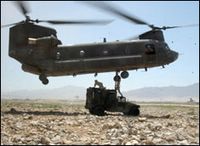 | CH-47 Chinook helicopter during an operation near Bagram, Afghanistan. The Soldiers are assigned to the 25th Infantry Division, |
 | UH-60L Blackhawk helicopter flies a low-level mission over Iraq. Army aviation assets are playing a key role in Operation Iraqi Freedom |
 | HH-60G Pave Hawk flies through the sky after refueling from an HC-130P Combat Shadow during a training mission |
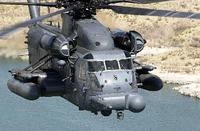 | MH-53J Pave Low IIIE heavy-lift helicopter is the largest, most powerful and technologically advanced helicopter in the Air Force inventory. |
Recon
 | An E-2C Hawkeye, assigned to the 'Seahawks' of Carrier Airborne Early Warning Squadron One Two Six (VAW-126), takes to the air after conducting a touch-and-go landing |
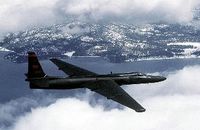 | An Air Force U-2 Dragon Lady flies a training mission. (U.S. Air Force photo by Master Sgt. Rose Reynolds) |
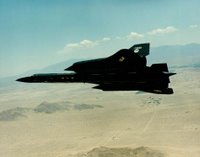 | SR-71 Blackbird- The Lockheed SR-71 remains one of the most exotic and mysterious aircraft of all time. |
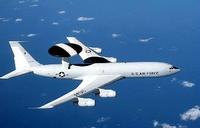 | The E-3 Sentry is an airborne warning and control system aircraft that provides all-weather surveillance, command, control and communications |
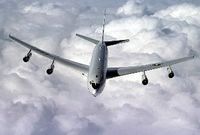 | An E-8C Joint Surveillance Target Attack Radar System (Joint STARS) from the 93rd Air Control Wing flies a refueling mission over the skies of Georgia. |
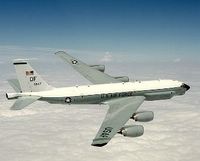 | An RC-135U Combat Sent aircraft flies a training mission from Offutt Air Force Base, Neb. There are only two Combat Sent aircraft in the Air Force inventory |
Special Duty
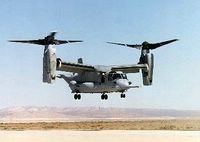 | the CV-22 Osprey looks like a helicopter on the ground with two sets of propeller rotors on each wing tip. Once airborne, the rotors tilt forward |
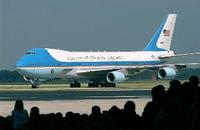 | Air Force One carrying President George W. Bush taxies on the flightline here June 16. The president delivered a speech that was broadcast live to servicemembers worldwide. |
Tankers
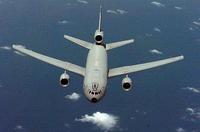 | A KC-10A Extender from the 6th Air Refueling Squadron, Travis Air Force Base, Calif., cruises on a mission while deployed to the 2nd Air Expeditionary Group, |
Trainers
 | The T-38 Talon is a twin-engine, high-altitude, supersonic jet trainer used in a variety of roles because of its design, economy of operations, ease of maintenance, high performance and exceptional safety record |
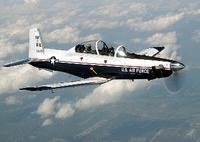 | The T-6A Texan II is a single-engine, two-seat primary trainer designed to train Joint Primary Pilot Training, or JPPT, students in basic flying skills |
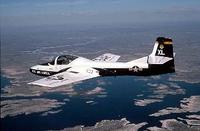 | A T-37 Tweet aircraft from the 85th Fighter Training Squadron, Laughlin AFB, Texas, flies over Lake Amistad during a training mission. |
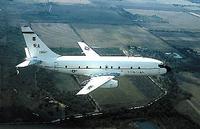 | The T-43A is a medium-range, swept-wing jet aircraft equipped with modern navigation and communications equipment to train navigators for strategic and tactical aircraft. |
Transport
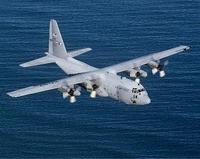 | A C-130 Hercules from the 2nd Airlift Squadron, Pope Air Force Base, N.C., flies over the Atlantic Ocean. |
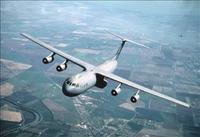 | The C-141 Starlifter is the workhorse of the Air Mobility Command. The Starlifter fulfills the vast spectrum of airlift requirements |
 | A C-17 Globemaster III from the 437th Airlift Wing at Charleston Air Force Base, S.C., performs a combat landing during an incentive flight here recently. |
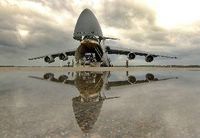 | C-5 Galaxy - Airmen unload vehicles from a C-5 Galaxy here June 11. during Exercise Golden Medic. U.S. Air Force photo. |
 | The C-21A provides cargo and passenger airlift and can transport litters during medical evacuations. The C-21A's turbofan engines are pod-mounted on the sides of the rear fuselage. |
X Planes
 | Bell X-1 Rocket Plane - The Bell X-1 rocket research plane was, of course, the world's first aircraft to break the 'sound barrier'. |
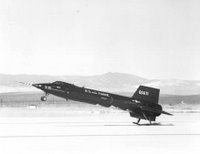 | North American's X-15 - X-15 The X-plane with the longest and most successful career was North American's X-15. |
Information presented on Air Force Link is considered public information and may be distributed or copied. Use of appropriate byline/photo/image credits is requested.
All information on navy.mil is public domain and may be distributed or copied unless otherwise specified. Use of appropriate byline/photo/image credits is requested
Images on the Army Web site are cleared for release and are considered in the public domain. Request credit be given as "Photo Courtesy of U.S. Army" and credit to individual photographer whenever possible.
Generally speaking, works created by U.S. Government employees are not eligible for copyright protection in the United States. See Circular 1 "COPYRIGHT BASICS" from the U.S. Copyright Office.
